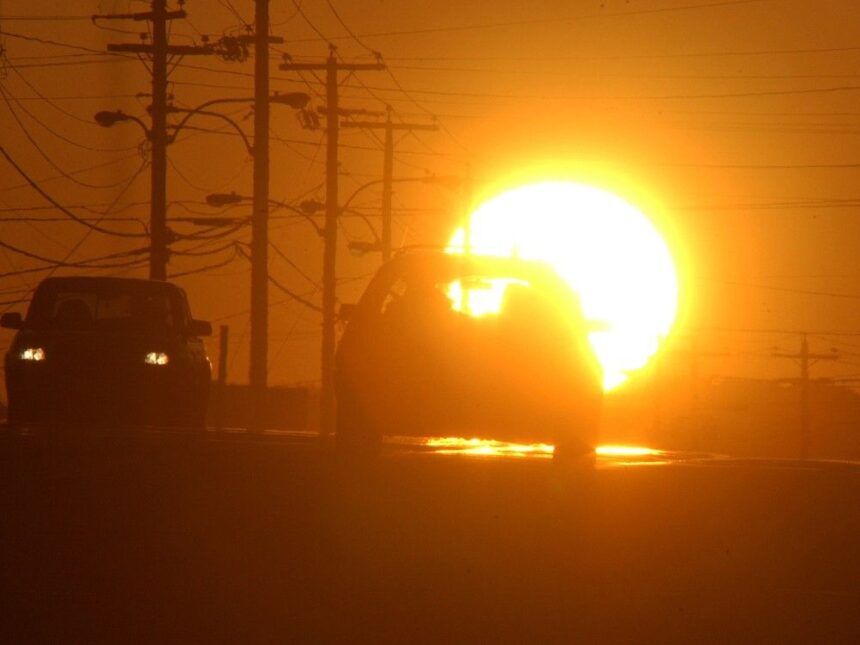I stepped out of my rental car in Oshawa last Thursday and felt the unmistakable weight of humidity pressing down. The air hung thick and still between buildings. A local climate scientist I’d arranged to meet, Dr. Aisha Patel from the University of Toronto’s Environmental Studies program, greeted me with a knowing look.
“This is just the appetizer,” she said, gesturing broadly at the sweltering parking lot. “The main course arrives next week.”
According to Environment Canada, eastern regions are about to experience their first significant heat event of the summer, with temperatures expected to climb steadily through the weekend before peaking between Monday and Wednesday. Forecasts predict daytime highs potentially reaching 34°C from Windsor to Quebec City, with humidex values pushing toward 40 in urban centers.
“When we combine the high temperatures with elevated humidity levels, that’s when we cross from uncomfortable to dangerous,” Dr. Patel explained as we sought shade under a campus maple tree. “The body can’t cool itself effectively when the air is saturated with moisture.”
The approaching heat dome—a weather phenomenon where high pressure traps hot air beneath it like a lid on a pot—comes after what’s been a relatively mild start to summer across much of Ontario and Quebec. This sudden shift worries public health officials, who note populations haven’t had time to acclimatize to extreme temperatures.
Toronto’s Medical Officer of Health, Dr. Eileen de Villa, announced yesterday that cooling centers would open throughout the city beginning Sunday. “Heat-related illness remains preventable,” she emphasized in a statement. “But prevention requires both individual awareness and community resources.”
During my visit to Montreal last month for a climate adaptation conference, I spoke with Catherine Dubois, who coordinates the city’s heat response network. She showed me maps pinpointing vulnerable neighborhoods—those with fewer trees, more pavement, and higher concentrations of seniors living alone.
“After the 2018 heat wave that killed 66 people across the city, we’ve completely transformed our approach,” Dubois told me. “We now deploy street teams in high-risk areas who check on vulnerable residents before the thermometer hits critical levels.”
This proactive stance reflects growing recognition that climate change has made heat waves not merely uncomfortable inconveniences but significant public health emergencies. Environment Canada meteorologist David Phillips confirmed that the upcoming heat event fits patterns consistent with climate change projections.
“What’s notable isn’t just the peak temperatures,” Phillips explained during our phone conversation yesterday. “It’s the duration and nighttime temperatures that concern us most. When overnight lows stay above 20°C, the cumulative physiological stress becomes particularly dangerous.”
Those overnight temperatures matter tremendously. Dr. Jerome Rako, an emergency physician at Ottawa General Hospital whom I interviewed earlier this spring, explained why: “The body needs relief. When people—especially those without air conditioning—can’t cool down overnight, each subsequent day of heat becomes progressively more dangerous.”
In communities along the St. Lawrence, preparations are already underway. When I visited the riverside town of Trois-Rivières last summer for a story on changing water levels, municipal worker Jean Tremblay showed me newly installed misting stations in public parks.
“This infrastructure wasn’t part of our planning ten years ago,” Tremblay said, adjusting a sprinkler system. “Now it’s essential.”
For farmers across eastern agricultural regions, the forecast represents another challenge in an already difficult growing season. Angela Williams, whose family has operated a mixed vegetable farm outside Kingston for three generations, invited me to walk her fields last month as part of my reporting on climate resilience.
“First it was too wet to plant on schedule, then we had that cold snap in May,” Williams said, inspecting rows of young peppers. “Now we’re looking at scorching heat. The extremes keep getting more extreme.”
Williams has adapted by installing shade cloth over sensitive crops and shifting irrigation to nighttime hours when evaporation losses are lower. “You can’t farm like it’s 1990 anymore,” she noted.
Urban planners are similarly rethinking infrastructure. I attended a community design workshop in Hamilton earlier this year where residents collaborated with city officials on identifying “cool corridors”—streets with enhanced tree canopy and reflective surfaces that provide relief during heat events.
“These aren’t luxury amenities anymore,” said urban planner Sanjay Mehta during the workshop. “They’re public health necessities.”
As eastern Canada prepares for this first significant heat event, Environment Canada recommends limiting outdoor activities during peak hours, staying hydrated, checking on vulnerable neighbors, and never leaving children or pets in vehicles. Officials emphasize that even young, healthy individuals should exercise caution during extreme heat.
“People often don’t realize they’re in trouble until they’re in serious trouble,” Dr. Patel warned me before I left campus. “Heat exhaustion can progress to heat stroke rapidly.”
For millions across Ontario, Quebec, and the Maritimes, next week will bring the first real test of summer resilience. As I drove away from Oshawa, past neighborhoods where children played in sprinklers and construction workers sought patches of shade, I couldn’t help but reflect on how something as fundamental as seasonal heat has transformed from background condition to foreground threat.
The forecast calls for relief by late next week, when a cold front is expected to bring temperatures back to seasonal norms. Until then, as one public health nurse in Kingston told me, “Check on your neighbors. This is community business now.”






